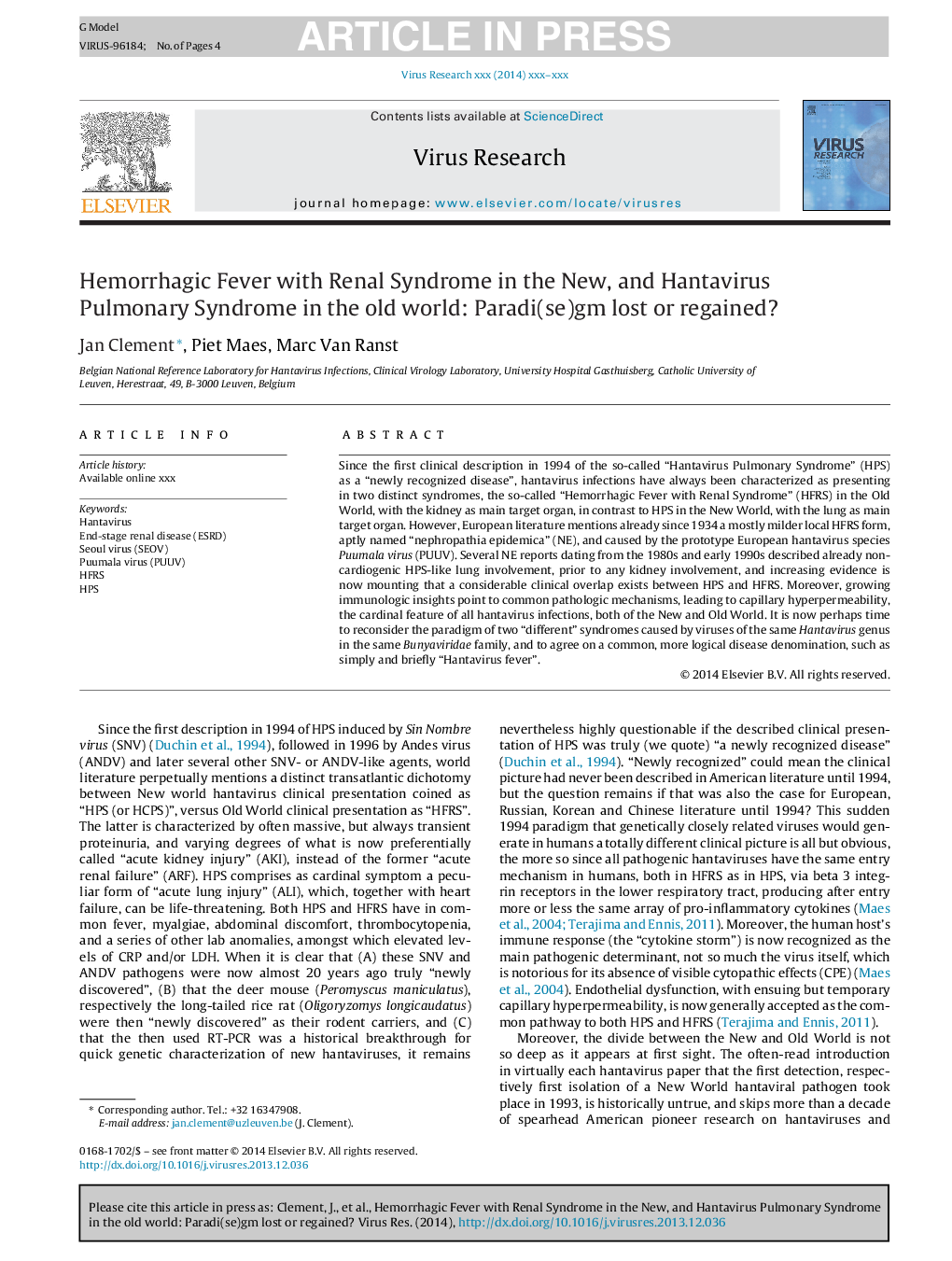| Article ID | Journal | Published Year | Pages | File Type |
|---|---|---|---|---|
| 6142537 | Virus Research | 2014 | 4 Pages |
Abstract
Since the first clinical description in 1994 of the so-called “Hantavirus Pulmonary Syndrome” (HPS) as a “newly recognized disease”, hantavirus infections have always been characterized as presenting in two distinct syndromes, the so-called “Hemorrhagic Fever with Renal Syndrome” (HFRS) in the Old World, with the kidney as main target organ, in contrast to HPS in the New World, with the lung as main target organ. However, European literature mentions already since 1934 a mostly milder local HFRS form, aptly named “nephropathia epidemica” (NE), and caused by the prototype European hantavirus species Puumala virus (PUUV). Several NE reports dating from the 1980s and early 1990s described already non-cardiogenic HPS-like lung involvement, prior to any kidney involvement, and increasing evidence is now mounting that a considerable clinical overlap exists between HPS and HFRS. Moreover, growing immunologic insights point to common pathologic mechanisms, leading to capillary hyperpermeability, the cardinal feature of all hantavirus infections, both of the New and Old World. It is now perhaps time to reconsider the paradigm of two “different” syndromes caused by viruses of the same Hantavirus genus in the same Bunyaviridae family, and to agree on a common, more logical disease denomination, such as simply and briefly “Hantavirus fever”.
Related Topics
Life Sciences
Immunology and Microbiology
Virology
Authors
Jan Clement, Piet Maes, Marc Van Ranst,
